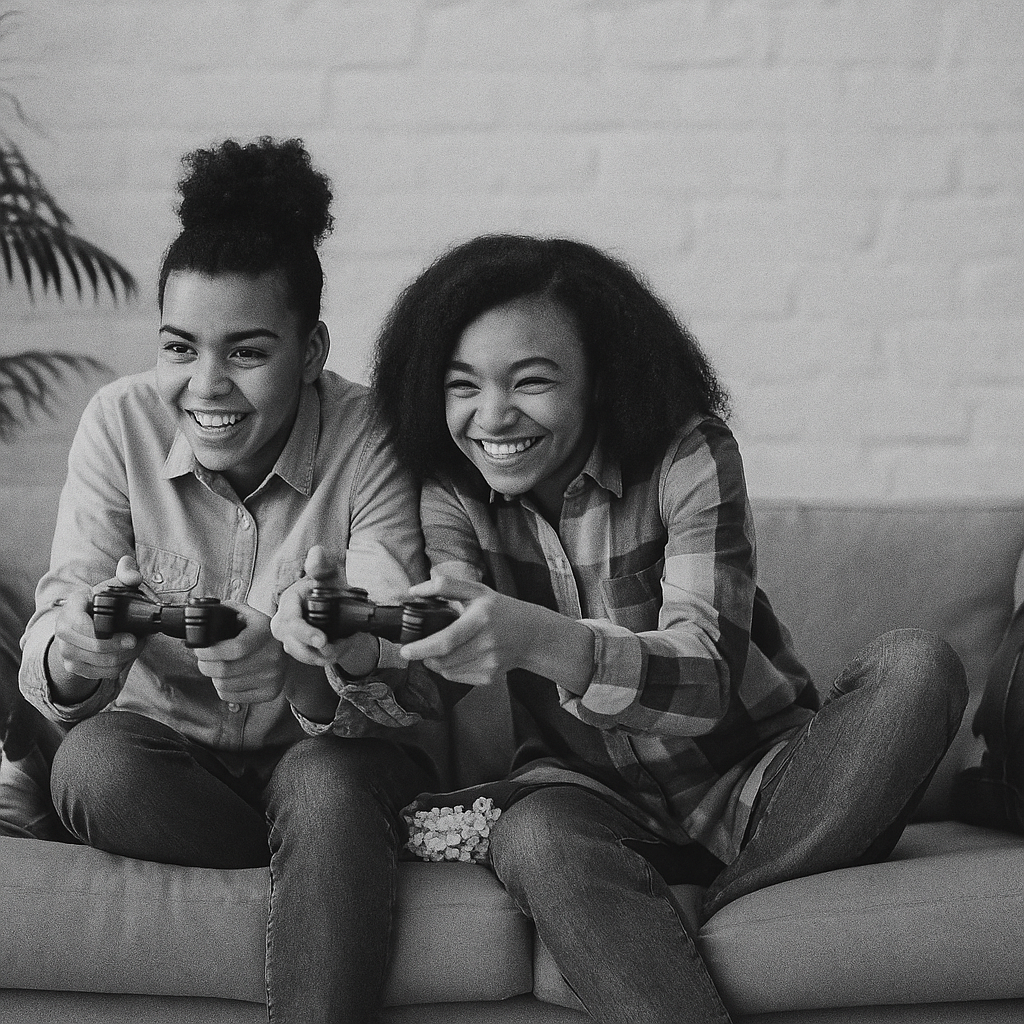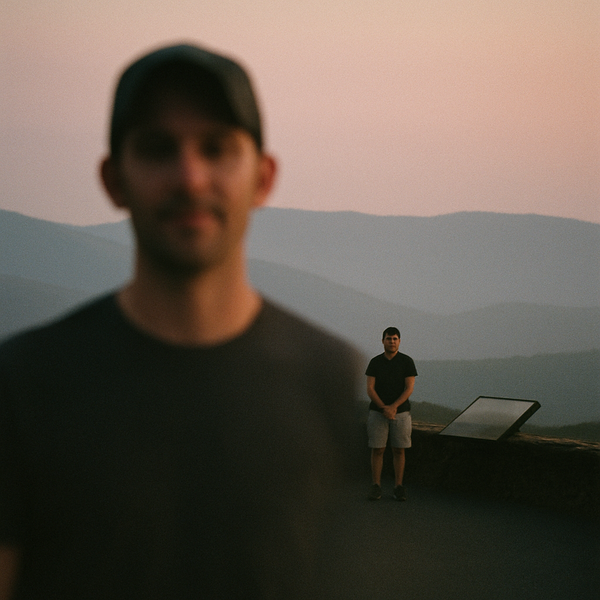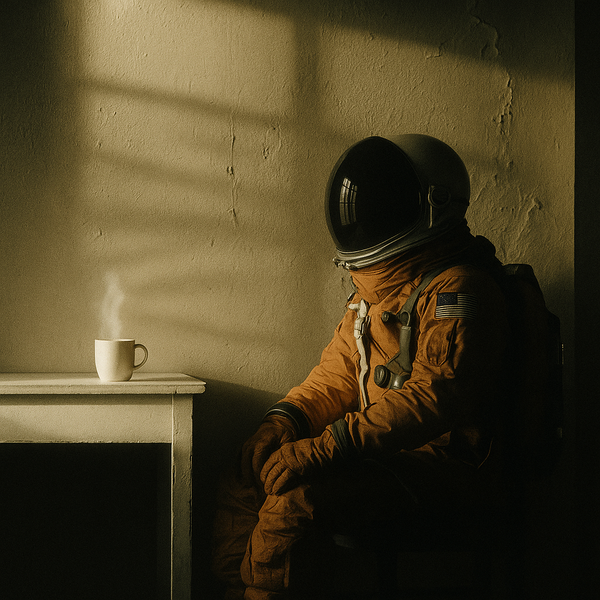What Video Game Design Teaches Us About Friendship

The best friendships start in the weirdest places. Mine began on a game forum dedicated to obscure Sega Saturn imports, where three strangers bonded over a shared love of Burning Rangers, an extremely rare late-release Sega Saturn exclusive with approximately 5,000 North American copies produced. Twenty years later, we still text each other fire emoji whenever something good happens. This is what I think about when I play modern video games—not the graphics or mechanics, but how they create spaces where people accidentally become important to each other.
Take There Are No Ghosts at the Grand, a musical adventure game that shouldn't work but absolutely does. You inherit a haunted hotel, except there are no ghosts—just memories and music and a talking cat named Mr Bones who judges your renovation choices. The game uses Unity not to build photorealistic corridors but to create something that feels like a community theater production where the audience gets to paint the sets. Every musical number (yes, there are musical numbers) feels less like a cutscene and more like that moment at karaoke when your shy friend suddenly belts out "Total Eclipse of the Heart" and everyone realizes they've been holding back their whole life.
What makes this fascinating isn't the supernatural mystery or even the songs themselves—it's how the developers deliberately chose constraints that force connection. The hotel renovation mechanic isn't about optimization or efficiency. You're not trying to maximize profits or unlock achievements. Instead, you're creating spaces where fictional guests might feel comfortable enough to share their stories. One room might need warm colors because the guest there lost someone. Another needs a view of the garden because someone else is learning to hope again.
This is the opposite of how we usually think about game design. Modern gaming often promises infinite possibilities, open worlds so vast you need a real-world week to cross them. But There Are No Ghosts at the Grand understands something profound: limitations create intimacy. When you can't go everywhere, the somewhere you are matters more.
Modern multiplayer games often feel like they're fighting against this truth. They add features, modes, progression systems, battle passes—anything to keep players engaged. But engagement isn't connection. I've played hundreds of hours of competitive shooters where I couldn't tell you a single thing about my teammates beyond their usernames. Compare that to Journey, where you can't even see your partner's name, can only communicate through musical chirps, yet people regularly report crying when their companion disappears.
The team behind There Are No Ghosts at the Grand seems to understand this paradox. By making it a musical, they're already asking players to accept vulnerability as the price of entry. Musicals are inherently embarrassing—people burst into song about their feelings! But that embarrassment is the point. It's the same reason karaoke nights bond coworkers faster than any team-building exercise. Shared vulnerability is friendship's fast-track.
The game's overenthusiastic Scottish AI assistant named MacBrushy, embodies this perfectly. He doesn't solve your problems, but he shows up, which is basically how all good friends operate. He makes terrible puns while you're trying to figure out why the hotel's previous owner disappeared. He sits with you while you arrange furniture in empty rooms, filling silence with observations about dust patterns and wallpaper choices.
This is what Unity—the game engine, not the concept—does best when developers remember it's not just about rendering polygons. It's about creating spaces where things can happen between people. The musical numbers in There Are No Ghosts at the Grand work because they're not just watching animations; you're participating in something deliberately silly and meaningful at the same time, like those moments when you and your friends recreate an entire movie scene from memory at 2 AM.
The lesson here isn't that all games should be musicals (though honestly, why not?). It's that connection happens in the spaces between features, in the moments when games stop trying so hard to be impressive and just let people be weird together. The best multiplayer experience I had this year was when a Destiny 2 raid glitched and my team spent an hour just dancing in a broken room, making up stories about why our characters were stuck there.
Video games teach us that friendship doesn't need perfect communication or infinite options. Sometimes it just needs a rope between two people, a song everyone knows the words to, or a hotel full of not-ghosts where a cat reminds you that renovating spaces is really about making room for others.
The next time you boot up a game with friends, pay attention to the moments between objectives. That's where the real game lives—in the pause before you open the next door, in the quiet after a boss fight, in the second before someone starts humming and everyone else joins in. That's where friendship happens: not in the grand gestures, but in the small spaces we create for each other to be ridiculous, vulnerable, and present.
References
- https://www.windowscentral.com/gaming/there-are-no-ghosts-at-the-grand-gamescom-2025
- https://www.wallpaper.com/art/exhibitions-shows/danielle-brathwaite-shirley-serpentine
- https://news.xbox.com/en-us/2025/08/21/there-are-no-ghosts-at-the-grand-demo-hands-on-preview
- https://www.thesixthaxis.com/2025/06/08/no-ghosts-at-the-grand-is-a-musical-supernatural-hotel-renovator-with-a-talking-cat
- https://store.steampowered.com/app/3725190/There_Are_No_Ghosts_at_the_Grand
- https://www.gematsu.com/2025/06/narrative-driven-musical-adventure-game-there-are-no-ghosts-at-the-grand-announced-for-xbox-series-pc
- https://www.gamespot.com/articles/this-ghost-story-musical-is-packed-with-personality-and-a-fright-filled-mystery/1100-6534108
- https://games.mxdwn.com/news/there-are-no-ghost-at-the-grand-announced-at-xbox-games-showcase-2025
- https://monstervine.com/2025/06/musical-adventure-there-are-no-ghosts-at-the-grand-announced-for-2026
- https://www.creativebloq.com/3d/video-game-design/there-are-no-ghosts-at-the-grand-is-a-seaside-haunted-house-musical-packed-with-eccentric-british-characters
- https://www.creativebloq.com/3d/video-game-design/drifted-is-like-flying-a-paper-plane-through-insides-2-5d-dystopian-world
Models used: claude-opus-4-1-20250805, gpt-image-1




